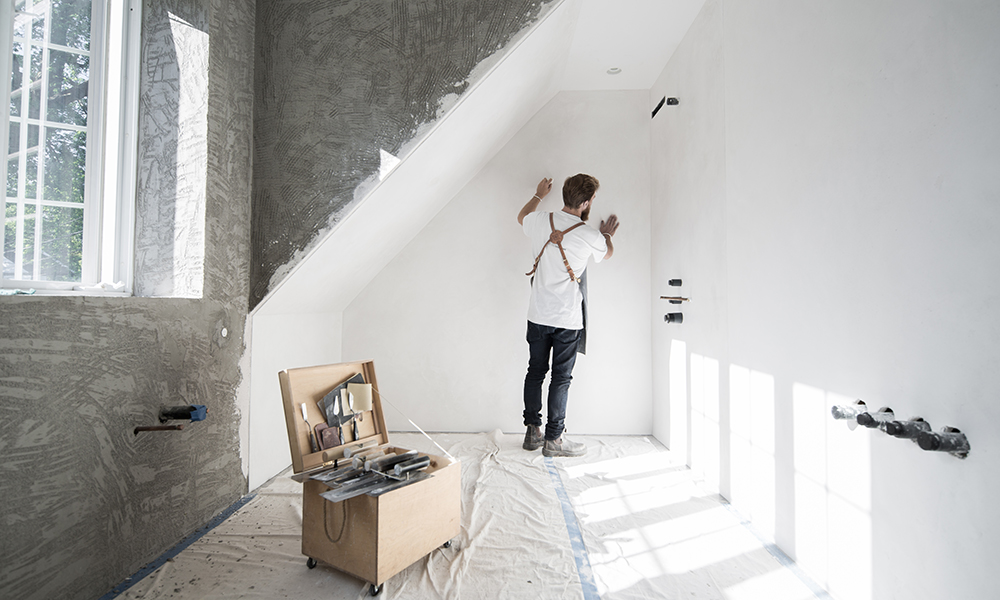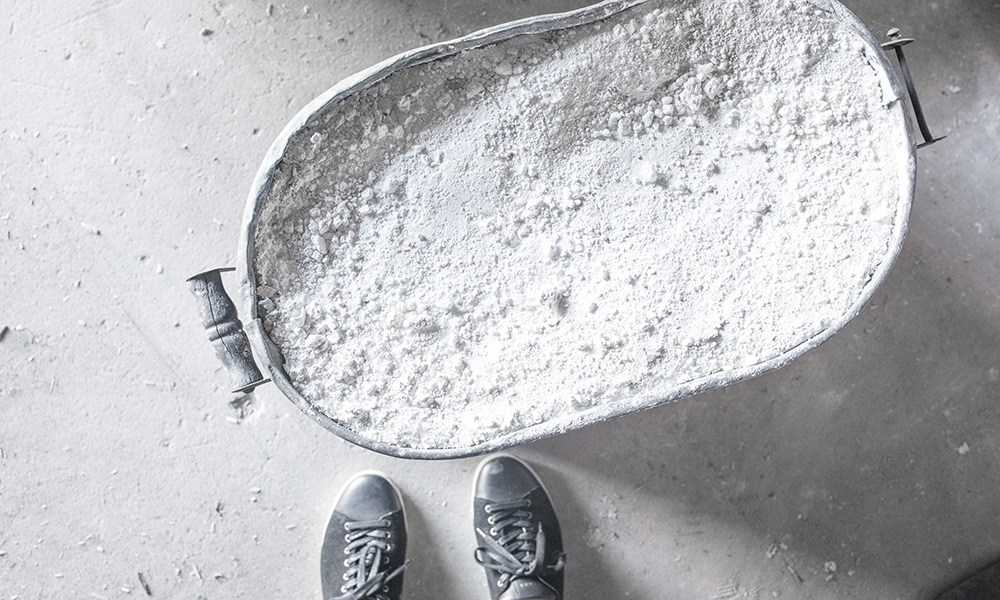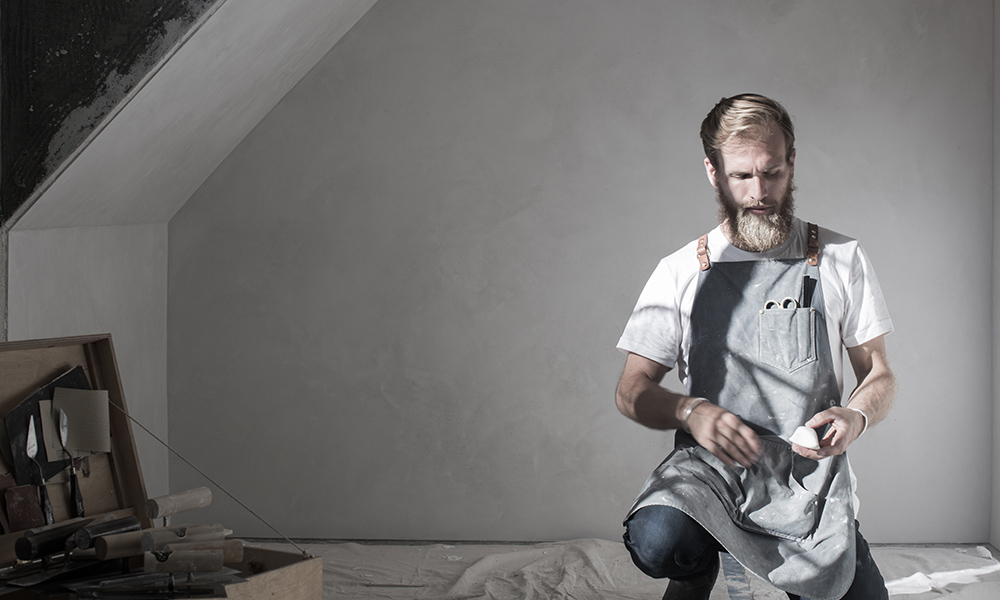Anthony Néron’s Hemp Revolution
Art Du Chanvre hopes to bring hempcrete to everyone, while improving the world in the process.
Most teenagers haven’t decided what they want to do with their lives. And if they have, it’s likely that their aspirations will morph and change as doors open and close, as youthful idealism makes way for pragmatic considerations.
But as a teenager, Anthony Néron already had a plan: “I knew very early on that hemp was an answer for environmental, social and economic crisis,” he says. “It truly was my intention to bring my contribution to make this world a better place.”
And so, Néron started a hemp clothing line at 18 years old, learning the clothing design trade and honing his sewing skills. For two years, he toiled at the sewing machine, crafting hemp clothes that he hoped could bring a revolution of sorts, until his big dreams crumbled under more practical realizations.
“Clothing from China was way too cheap for me to [compete with],” he explains. “I couldn’t make a living out of it.”

Anthony Néron feels the wall to properly place billions of grains of sand, carve the corners and polish the entire surface with a river pebble until the wall becomes a solid and impervious stone.
But as fate would have it, a new door was opening for him: Néron received an invitation to visit the first hempcrete house in Quebec. He became a helper on the site and developed relationships with the craftsmen. He followed them along to other job sites and apprenticed for four years.
It was a natural fit. His mother was a designer and would often bring him along on projects, giving him small jobs on construction sites. And after learning the ins and outs of hempcrete construction, he was ready to strike out on his own with his vision: Art Du Chanvre.
After working on many hempcrete job sites, Néron saw a need for a different kind of look. Most houses he worked on were out in rural areas and had a rustic vibe. “It was not for everyone,” he said. With his Quebec-Canada based Art Du Chanvre (which translates to Art of Hemp), Néron combines hemp and lime construction with a more refined and minimalist aesthetic.
“My goal was to make something very universal,” he said. “It was my intention to bring hempcrete into contemporary design. I never gave up on my dream on making hemp a solution for everyone.”

Art Du Chanvre believes choosing to build with healthy ingredients and surrounding yourself with materials that respect the environment is a way of caring for the future.
It’s clear that Néron is focused on the plant’s revolutionary properties, and for good reason. Hempcrete offers a wide variety of benefits compared to traditional building materials. It’s fire- and vermin-resistant. It keeps interiors cool in the summer and warm in the winter. It’s simultaneously airtight yet breathable, making it virtually immune to mold and other humidity-related problems. So why aren’t all homes built with hempcrete?
Right now, it costs about 10 percent more to build a house out of hempcrete compared to traditional materials. However, that cost is expected to drop as more people adopt the material, and more people likely will switch to hempcrete with the realization they can save money in the long run on energy costs while getting a structure that will last centuries.
“People are kind of afraid of change,” says Néron. But he hopes that his clean and modern constructions will help bring hemp to a broader audience. With Art Du Chanvre, Néron prefers to focus on beautiful lines and textures, while using whites and grays to create a canvas for eccentric furniture, colorful décor and elegant art.

Natural materials — lime, hemp and clay — are loaded into a van.
There’s also the issue of education – many are simply unaware of the material. Néron says a significant part of his job is teaching others about hempcrete, so he travels frequently to speak at various conferences.
“Construction can literally lead a revolution,” says Néron. “If we’re using hemp and making buildings, we’re not just stopping pollution – we’re also cleaning the earth.” Hemp captures carbon at it grows, while releasing oxygen, and can also help remove heavy metals and toxins from soil. Meanwhile, traditional construction materials that hemp oil can replace are petroleum byproducts such as floor wax, caulking material and house paint.
“You have the petroleum industry in the construction industry and they have too much power,” says Néron – citing yet another challenge he runs up against in his hemp revolution.

Anthony Néron holds a tool used to work with hempcrete – a medium that can keep interiors warm in winter months and also cool during hotter seasons.
The good news is that hempcrete is catching on. Néron says he is seeing more and more interest, especially in the United States. “The most receptive and open-minded people are the Americans,” he says. “I have more and more calls from the U.S.”
And while hemp and psychoactive marijuana are two very different plants, the liberalization of cannabis laws are propelling both forward. “[Legalization] opens a lot of doors. People are going to stop considering cannabis and hemp as a drug,” says Néron. “It really is a good thing and we have beautiful years ahead of us.”
Originally published in print edition of Cannabis Now. LEARN MORE
























